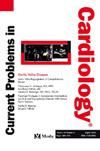A Multidimensional Approach to Understanding Genetic Diversity, Risk Stratification, and Personalized Interventions in Pediatric Hypertrophic Cardiomyopathy
IF 3.3
3区 医学
Q2 CARDIAC & CARDIOVASCULAR SYSTEMS
引用次数: 0
Abstract
Hypertrophic cardiomyopathy (HCM) in children presents unique challenges distinct from adult manifestations, with potentially devastating consequences, including sudden cardiac death. This comprehensive review synthesizes current evidence on the pathophysiology, clinical presentation, and management of pediatric HCM, highlighting critical differences from adult populations. While affecting approximately 1 in 500 individuals, pediatric HCM demonstrates more significant etiological heterogeneity, with up to 35% of cases stemming from non-sarcomeric causes, including RASopathies, metabolic disorders, and syndromic conditions. This etiological diversity contributes to variable disease trajectories and treatment responses, creating a significant research gap in pediatric-specific management protocols. Current pharmacological approaches primarily employ beta-blockers as first-line therapy, with calcium channel blockers serving as alternatives for intolerant patients. However, these conventional medications manage symptoms without addressing underlying pathophysiology or preventing disease progression. Emerging investigational therapies, including angiotensin receptor blockers and myosin inhibitors like mavacamten, show promise in preliminary studies but lack robust pediatric-specific evidence. Surgical interventions, including septal myectomy and the modified Konno procedure, demonstrate efficacy in medication-refractory cases but carry higher complication risks in younger patients. The critical research gap lies in developing targeted therapeutic approaches for pediatric-specific HCM subtypes, particularly those associated with syndromic and metabolic disorders. Additionally, risk stratification models for sudden cardiac death prevention remain inadequately validated in pediatric populations. This review identifies the urgent need for pediatric-focused clinical trials investigating both conventional and novel therapies alongside the development of age-appropriate risk assessment tools to guide personalized management strategies for this vulnerable population.
了解儿童肥厚性心肌病遗传多样性、风险分层和个性化干预的多维方法。
儿童肥厚性心肌病(HCM)表现出与成人不同的独特挑战,具有潜在的破坏性后果,包括心源性猝死。这篇全面的综述综合了目前关于儿童HCM的病理生理学、临床表现和治疗的证据,突出了与成人人群的关键差异。虽然儿童HCM的发病率约为1 / 500,但其病因异质性更为显著,高达35%的病例源于非肉瘤性原因,包括ras病变、代谢紊乱和综合征。这种病因的多样性导致了不同的疾病轨迹和治疗反应,在儿科特定的管理方案中造成了重大的研究差距。目前的药理学方法主要采用-受体阻滞剂作为一线治疗,钙通道阻滞剂作为不耐受患者的替代疗法。然而,这些传统的药物控制症状没有解决潜在的病理生理或预防疾病进展。新兴的研究性疗法,包括血管紧张素受体阻滞剂和肌球蛋白抑制剂如马伐camten,在初步研究中显示出希望,但缺乏强有力的儿科特异性证据。手术干预,包括室间隔肌切除术和改良的Konno手术,对药物难治性病例有效,但在年轻患者中有更高的并发症风险。关键的研究缺口在于开发针对儿科特异性HCM亚型的靶向治疗方法,特别是那些与综合征和代谢紊乱相关的HCM亚型。此外,预防心源性猝死的风险分层模型在儿科人群中仍未得到充分验证。本综述指出,迫切需要开展以儿科为重点的临床试验,研究传统和新型治疗方法,同时开发适合年龄的风险评估工具,以指导针对这一弱势群体的个性化管理策略。
本文章由计算机程序翻译,如有差异,请以英文原文为准。
求助全文
约1分钟内获得全文
求助全文
来源期刊

Current Problems in Cardiology
医学-心血管系统
CiteScore
4.80
自引率
2.40%
发文量
392
审稿时长
6 days
期刊介绍:
Under the editorial leadership of noted cardiologist Dr. Hector O. Ventura, Current Problems in Cardiology provides focused, comprehensive coverage of important clinical topics in cardiology. Each monthly issues, addresses a selected clinical problem or condition, including pathophysiology, invasive and noninvasive diagnosis, drug therapy, surgical management, and rehabilitation; or explores the clinical applications of a diagnostic modality or a particular category of drugs. Critical commentary from the distinguished editorial board accompanies each monograph, providing readers with additional insights. An extensive bibliography in each issue saves hours of library research.
 求助内容:
求助内容: 应助结果提醒方式:
应助结果提醒方式:


